
Imagine the Future Scenarios Competition
Scenarios provide plausible alternative views of the future. Building and using scenarios can help us explore what the future might look like and the likely challenges of living in it. Join the Imagine the Future Scenarios Competition and shape the way we live, work and play!
Since 2016, Shell has been inviting university students to imagine the future of more and cleaner energy in Asian and Middle Eastern cities and how it will change the way we live, work and play.
How today's youth see our world in 2060
What would our world be like in 2060? Would our lives be ruled by artificial intelligence? How will our lives be powered?
Such were the questions that participants in this competition explored as they learnt the art of scenarios and used it to propose plausible futures for their city of choice.
For the seventh year running, Shell shares its rich experience in this field with 842 students this year. These undergraduates were then tasked to envisage more and cleaner energy in an Asian or Middle Eastern city in 2060, and how will residents live, work and play.
Team DHAKA2060 from Singapore were crowned champions this year with their scenarios on the Bangladeshi capital. Coming in second and third were Team K-TIDE from Kuwait and Team Earthwish from Egypt respectively.
Their scenarios are not a forecast and certainly not crystal-ball gazing. Meet the teams and learn more about their ideas:
Imagining Dhaka City in 2060: Green Straitjacket versus Silicon Delta by DHAKA2060 from National University of Singapore
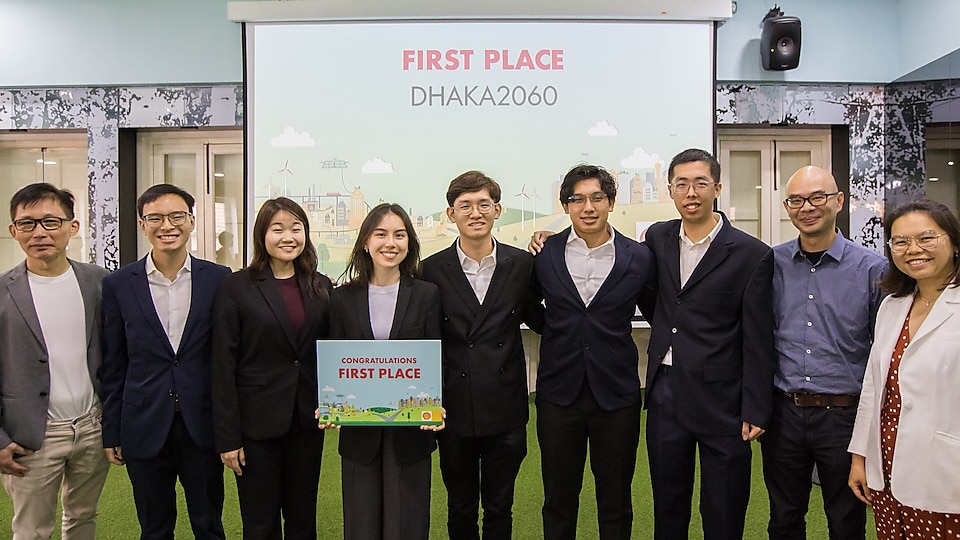
In a future where climate change and overpopulation are unavoidable, we consider two divergent scenarios predicated on two major critical uncertainties; the energy security of Dhaka city in both its energy mix and supply chain, and the degree and nature of government controls.
In Green Straightjacket , Dhaka’s energy supply comprises a highly diversified network of domestically produced renewables, with minimal reliance on foreign states. Crucially, the supply and provision of energy is wholly controlled by the state. The city resembles a command economy, coordinating statutory boards and energy suppliers to ensure a largely equitable and steady delivery of power to consumers. With an abundant and stable energy supply, production is streamlined, and more resources channelled into exploring emerging markets in technology. Nevertheless, such reliance on state direction is not without flaws. As Dhaka enters a new surveillance state, individual agency is largely forfeited, with complex artificial intelligences deployed by the government to ensure compliance. The way people work, live and play is confined within state planning and permission, in order to secure a sustainable future.
In Silicon Delta, Dhaka is a hub of foreign investment and opportunity, becoming a primary technological center in Asia. The city is heavily reliant on its allies for renewable, clean energy supply. In the spirit of a free market economy, the government imposes minimal to no capital controls. Yet, such decentralisation of the energy supply chain spurs strong competition between domestic and foreign corporations involved, contributing towards uncertainties in pricing and accessibility. Moreover, dependency on foreign energy imports leaves the city vulnerable to energy shocks, price inflation and political turbulence in its supplier nations. Nevertheless, uncertainty need not be detrimental. With reduced state surveillance and an abundant energy supply, entrepreneurial ways of harnessing technology emerge for instance, to streamline public services and make utilities more accessible. The city thus becomes a canvas for individual expression, sometimes for the betterment of society and at other times profligacy of public resources.
Imagining Possible Futures of Kuwait by KTIDE from Gulf University for Science and Technology, Kuwait
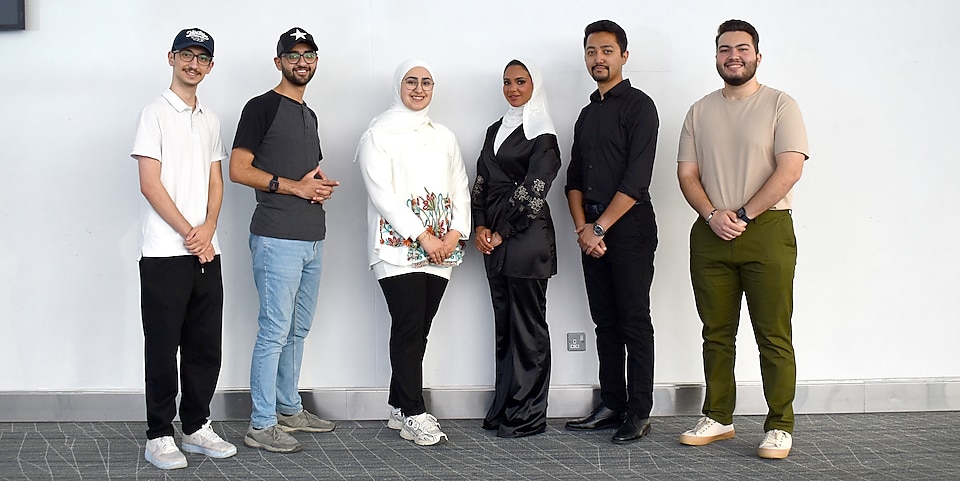
In the first scenario “Innovative Oasis”, Kuwait undergoes a comprehensive transformation. Starting in 2025, the country revolutionises its education system, integrating AI and advanced technologies. Sustainability becomes a central focus, with environmental education integrated across subjects. Kuwait transitions to clean energy through Small Modular Reactors and builds advanced, intelligent infrastructure. AI and robotics pervade society, revolutionising industries and attracting global talent. The nation becomes a leader in education, sustainability, and technology. Kuwait's visionary approach positions it as an inspiration for a brighter, sustainable future.
In the second scenario “Kuwait Horizon”, Kuwait is actively investing in renewable energy sources while also developing its tourism sector to diversify its economy. The country aims to attract tourists by offering modern malls, cultural sites, picturesque beaches, and a blend of tradition and modernity. The country focuses on tourism development, simplifying visa acquisition, and implementing business ownership reforms to attract foreign investment, as well as offering vast options for entertainment. Kuwait prioritises job opportunities for its citizens and aims to enhance access to education, healthcare, and housing. Kuwait envisions a future with advanced technology, sustainability, tourism, and cultural preservation.
Low-energy Tech-Topia vs Monopolised Charger by Earthwish from University of Science and Technology at Zewail City, Egypt
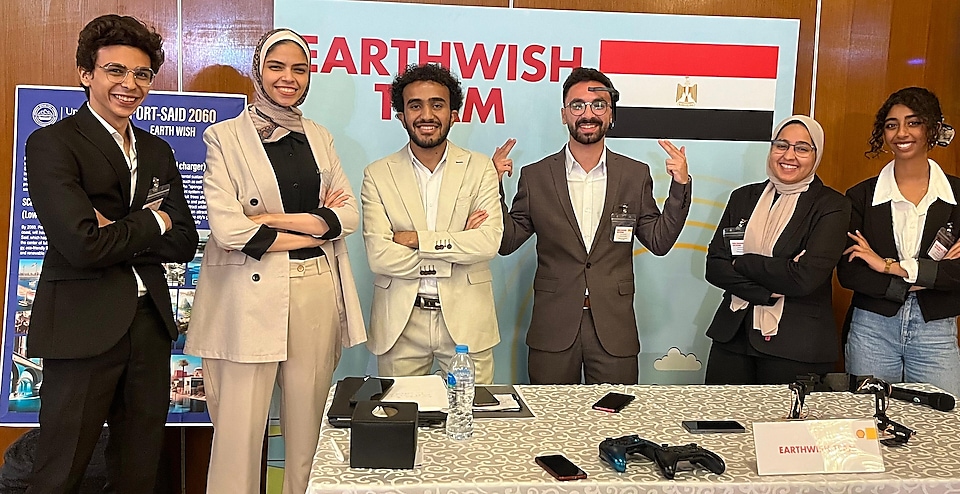
The Egypt team focused on Port Said where the Suez Canal is located which is one of the most important canals in the whole world. In Low-energy Tech-Topia, we envision a future where numerous technological advancements have been achieved, and these advancements are distributed across the entire world. As a result, nearly all citizens have the opportunity to benefit from these advancements. Moreover, global trade thrives in a harmonious and conflict-free manner. We delve into this scenario to examine its impact on various aspects, including data accessibility, employment rates, investment flow, and more.
In stark contrast to the previous scenario, the Monopolised Charger scenario portrays a future where technological advancements are monopolised by large corporations and the government. Only wealthy individuals have access to these advancements, leaving the majority of the population at a disadvantage. Furthermore, global trade is characterised by instability and conflicts, particularly in the waterways. In exploring this scenario, we aim to understand its implications on several aspects of the future, including the monopolisation of data, governmental subsidy practices, shifts in employment patterns, the impact on mass production, and more.
Shell Imagine the Future Scenarios Competition 2022/2023 Regional Finals
Title: Imagine The Future
Scenarios Competition Regional Finals
Duration: 46 seconds
[Text Display]
Imagine The Future
Scenarios Competition
Regional Finals
[Video Footage]
Female Interview
[Dialogue: Female]
It is really about showing a plausible scope for the future and not just throwing out futuristic ideas.
[Video Footage]
A group of students discussing their charts.
[Video Footage]
A girl writing something
[Video Footage]
A group of people discussing something sitting on a table.
[Video Footage]
Female Interview
[Dialogue: Female]
We get to see how we as youth have a stake in building a future that we want.
[Video Footage]
A boy presenting something.
[Video Footage]
Two boys discussing something holding a mobile screen in hand.
[Video Footage]
A girl presenting to the jury using the screen.
[Video Footage]
Male Interview
[Dialogue: Male]
Allowing us to have a better understanding of what’s to come.
[Video Footage]
Three people giving a presentation.
[Video Footage]
A female giving her remarks.
[Video Footage]
Male Interview
[Dialogue: Male]
The future is driven by challenges and the lessons that we learned from the past and the present.
[Video Footage]
A group of people giving their presentation and audience listening, sitting on chairs.
[Video Footage]
Male Interview
[Dialogue: Male]
The competition got me thinking about various thoughts in our country that I never thought about.
[Video Footage]
A group of people giving presentations.
[Video Footage]
A female and a male presenting.
[Video Footage]
A group doing a role play.
[Video Footage]
Male Interview
[Dialogue: Male]
We need thoughtful plans, great minds, and serious steps to progress for the future.
[Video Footage]
Jury giving their comments.
[Video Footage]
A male and a female presenting and showing something on the mobile screen.
[Video Footage]
A group of people presenting to the jury.
[Video Footage]
The jury listening to the presentation.
[Video Footage]
A group of people clapping and giving applause.
[Video Footage]
Male Interview
[Dialogue: Male]
I’m hopeful for the future. It’s gonna be a bright one.
[Video Footage]
Female Interview
[Dialogue: Female]
We need change and that change can start with you. So, start now.
[Video Footage]
The winner team posing on stage to the camera, holding the winner prize.
[Video Footage]
Winner team posing to the camera with jury members.
[Video Footage]
Winner team celebrating on the stage.
[Video Footage]
Winner team posing to the camera with the winning prize.
[Video Footage]
A large group of people posing to the camera.
[Dialogue: Group]
Imagine the future.
[Text Display]
Imagine The Future
Scenarios Competition
Regional Finals
Shell Imagine the Future Scenarios Competition 2022/2023 National Finals
Title: Imagine The Future
Scenarios Competition Nationals Finals
Duration: 46 seconds
Description:
[Video Footage]
Female Interview
[Dialogue: Female]
It is really about showing a plausible scope for the future and not just throwing out futuristic ideas.
[Video Footage]
A group of students discussing their charts.
[Video Footage]
A girl writing something
[Video Footage]
A group of people discussing something sitting on a table.
[Video Footage]
Female Interview
[Dialogue: Female]
We get to see how we as youth have a stake in building a future that we want.
[Video Footage]
A boy presenting something.
[Video Footage]
Two boys discussing something holding a mobile screen in hand.
[Video Footage]
A girl presenting to the jury using the screen.
[Video Footage]
Male Interview
[Dialogue: Male]
Allowing us to have a better understanding of what’s to come.
[Video Footage]
Three people giving a presentation.
[Video Footage]
A female giving her remarks.
[Video Footage]
Male Interview
[Dialogue: Male]
The future is driven by challenges and the lessons that we learned from the past and the present.
[Video Footage]
A group of people giving their presentation and audience listening, sitting on chairs.
[Video Footage]
Male Interview
[Dialogue: Male]
The competition got me thinking about various thoughts in our country that I never thought about.
[Video Footage]
Different people giving presentations.
[Video Footage]
Four people doing a role play on the stage.
[Video Footage]
Male Interview
[Dialogue: Male]
We need thoughtful plans, great minds, and serious steps to progress for the future.
[Video Footage]
People discussing in pairs.
[Video Footage]
A male and a female presenting to the jury.
[Video Footage]
A male and a female presenting to the jury.
[Video Footage]
Male Interview
[Dialogue: Male]
I’m hopeful for the future. It’s gonna be a bright one.
[Video Footage]
Female Interview
[Dialogue: Female]
We need change and that change can start with you. So, start now.
[Video Footage]
The winner team standing on stage, holding the winner prize.
[Video Footage]
One of the jury members shaking hands with the winner team.
[Video Footage]
Winner team posing to the camera with the winning prize.
[Video Footage]
A large group of people posing to the camera.
[Dialogue: Group]
Imagine the future.
[Text Display]
Imagine The Future
Scenarios Competition
Nationals Finals
Imagine the Future scenarios
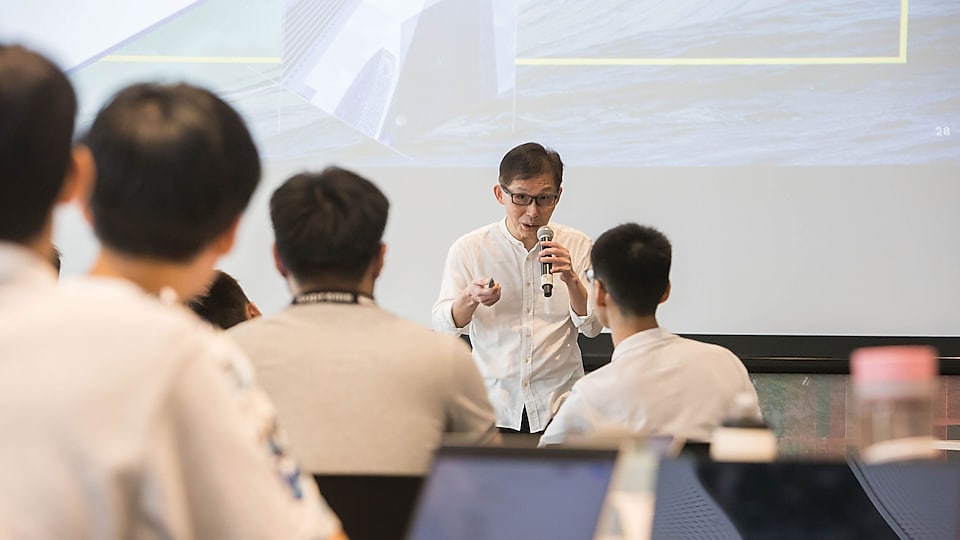
Discover what possibilities lie in the future of energy through the Imagine the Future Scenarios Competition.
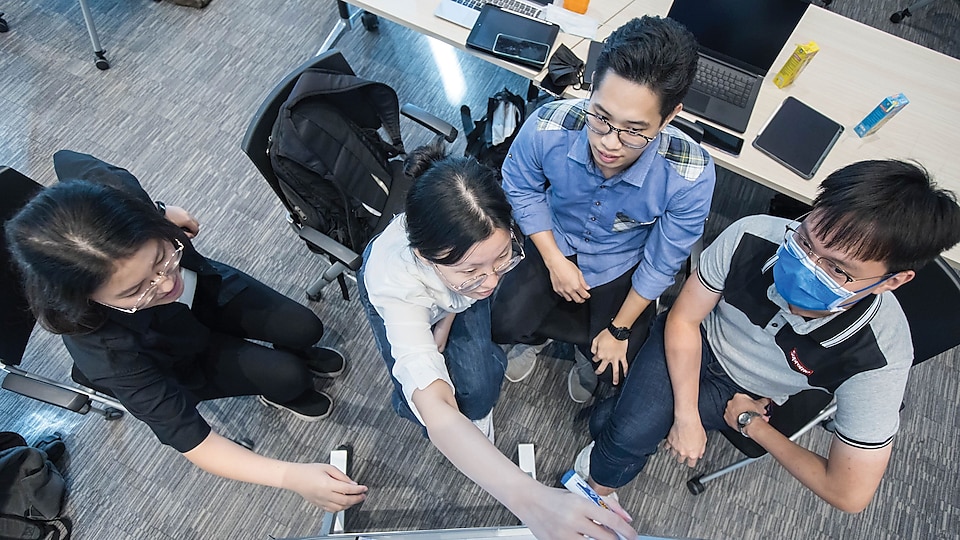
Scenarios provide plausible alternative views of the future.
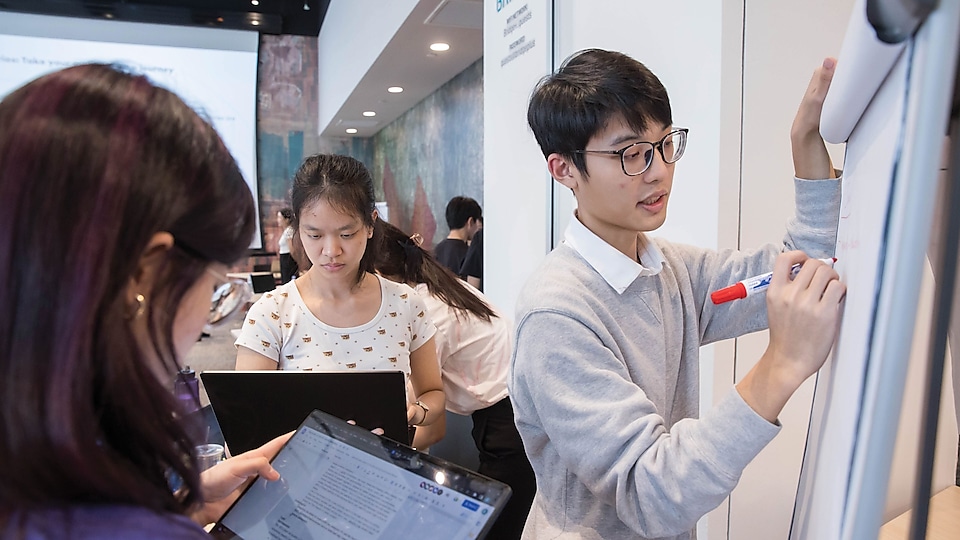
Imagine how we would live, work and play in 2060? How different would it be?
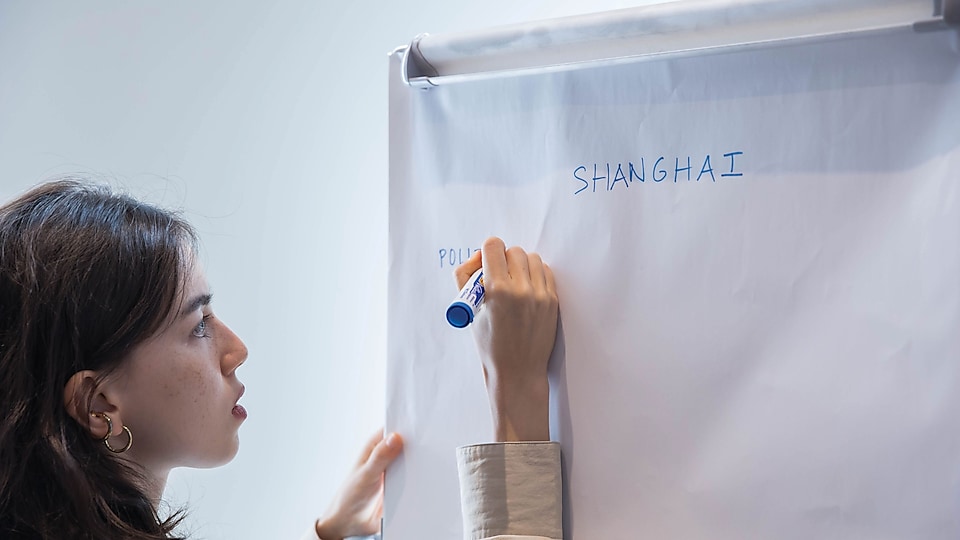
Each team will choose a city of choice and begin crafting their scenarios for the Competition.
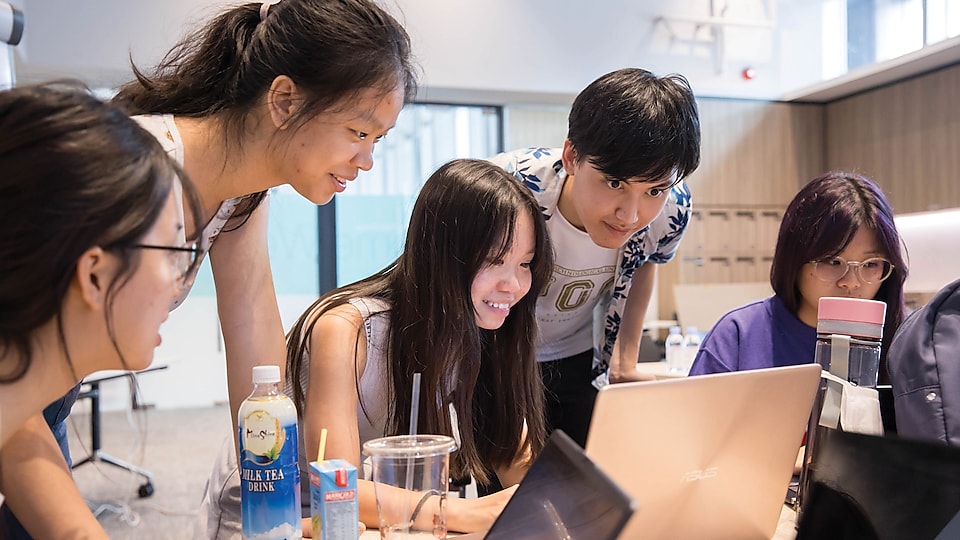
Teams will work closely together to better develop their scenarios.
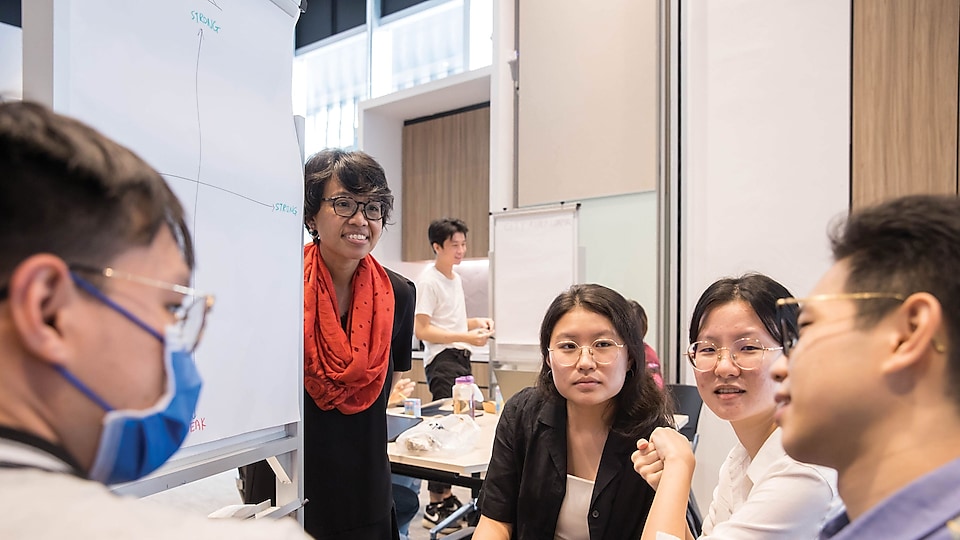
Teams receive immediate feedback to work on their understanding of the materials during the scenarios training session.

Imagine the Future Scenarios Competition allows the teams to explore ideas that are out of the box.
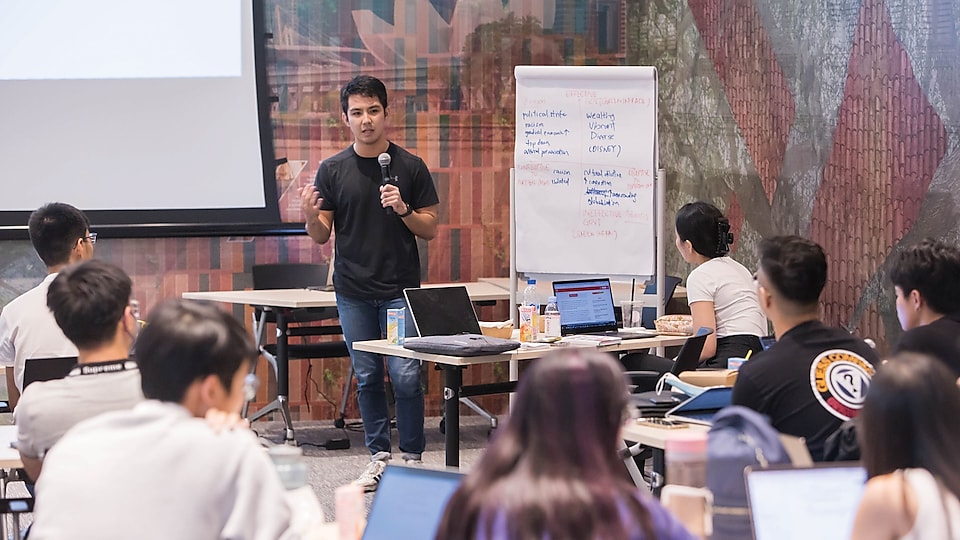
Powering progress together through ideas and discussions on the future of energy.
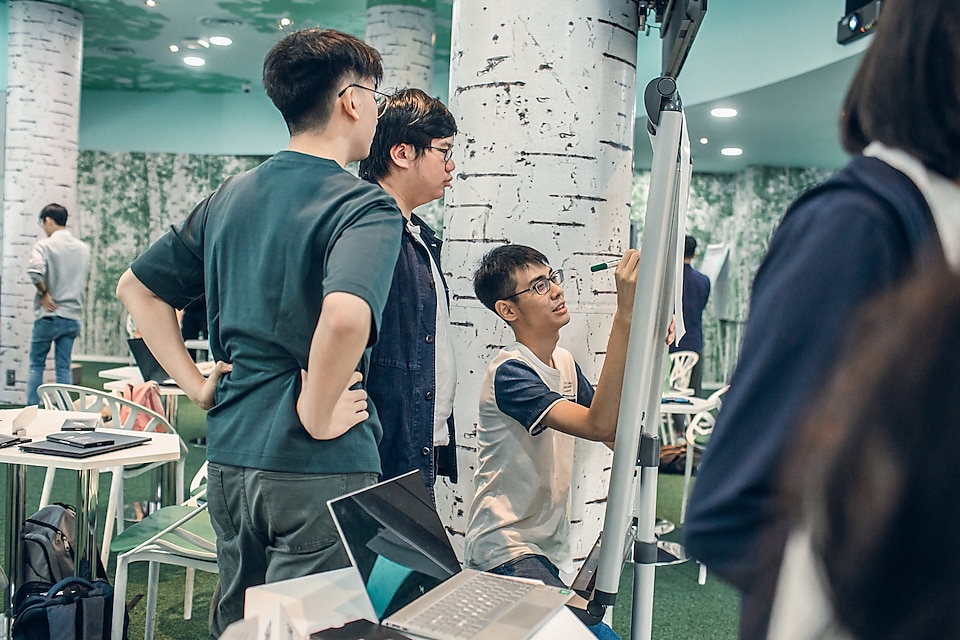
Teams attending a workshop, conducted by the Centre for Strategic Futures, to learn more about scenario planning in Singapore.
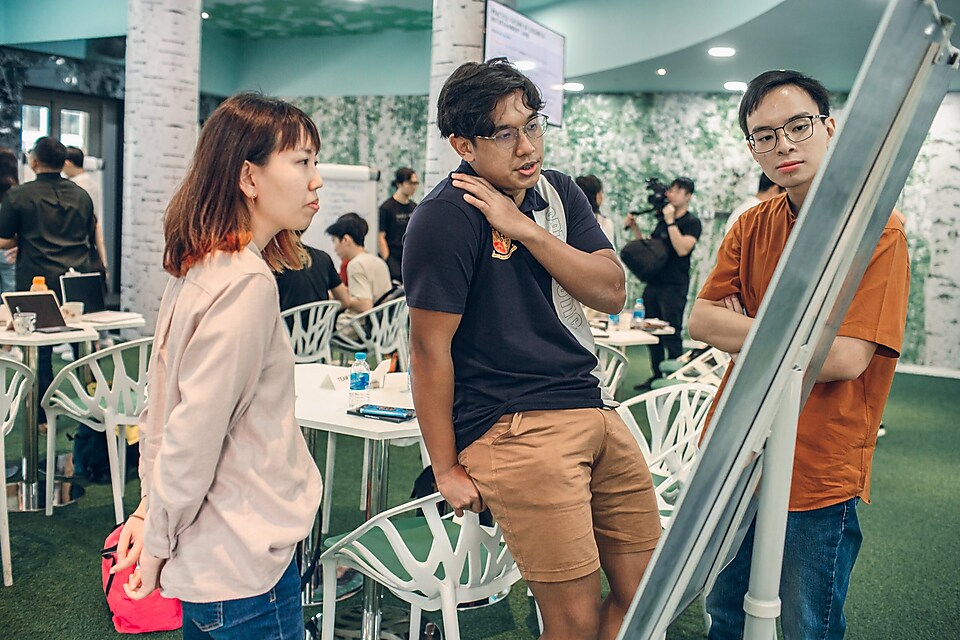
Teams engaging the trainers on their scenario analysis.
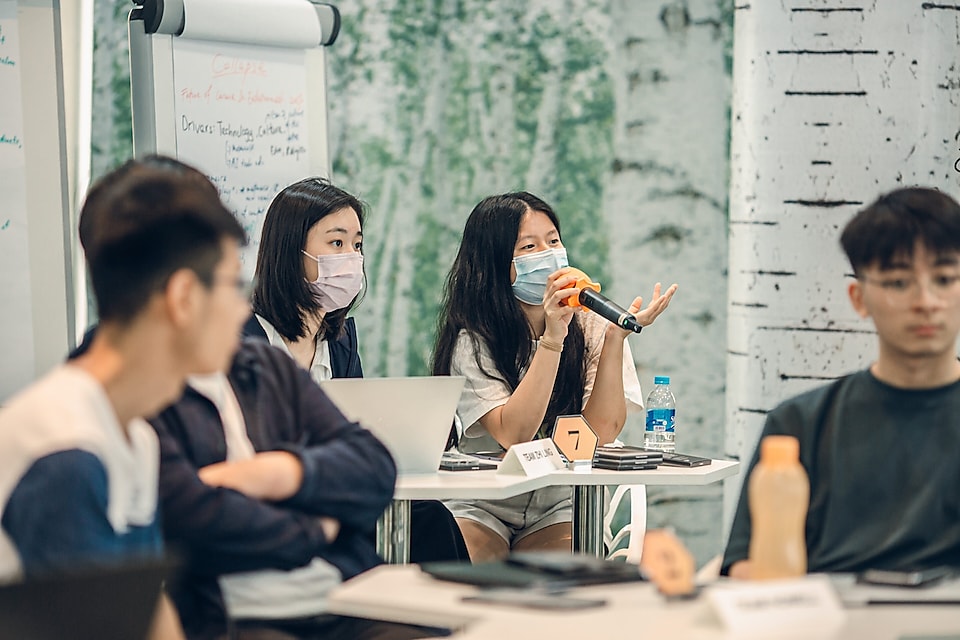
Teams vocalising their thoughts with the wider team during the Q&A session.
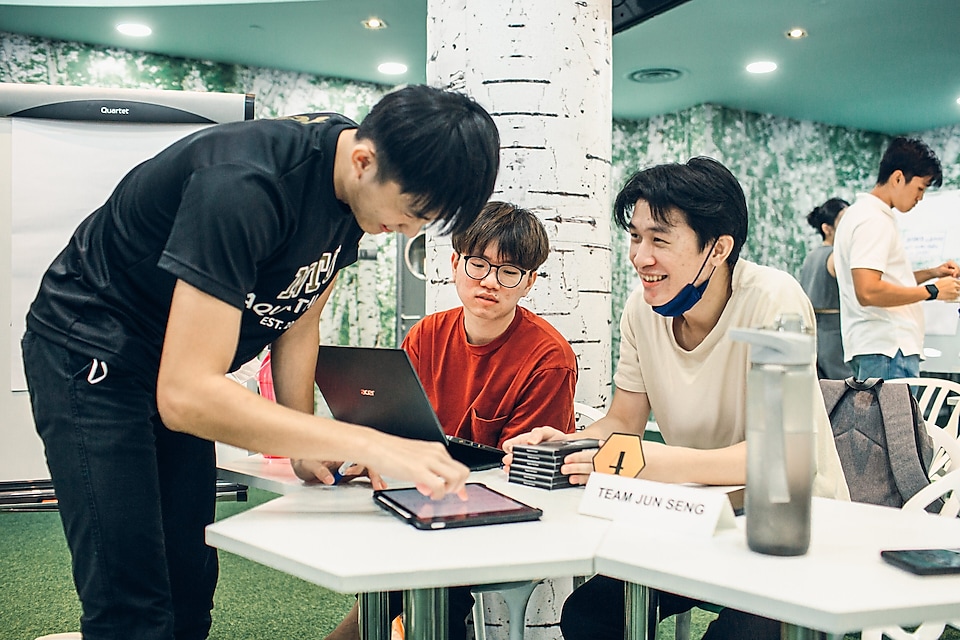
Teams ideating during a hands-on activity, generating a Futures Wheel.
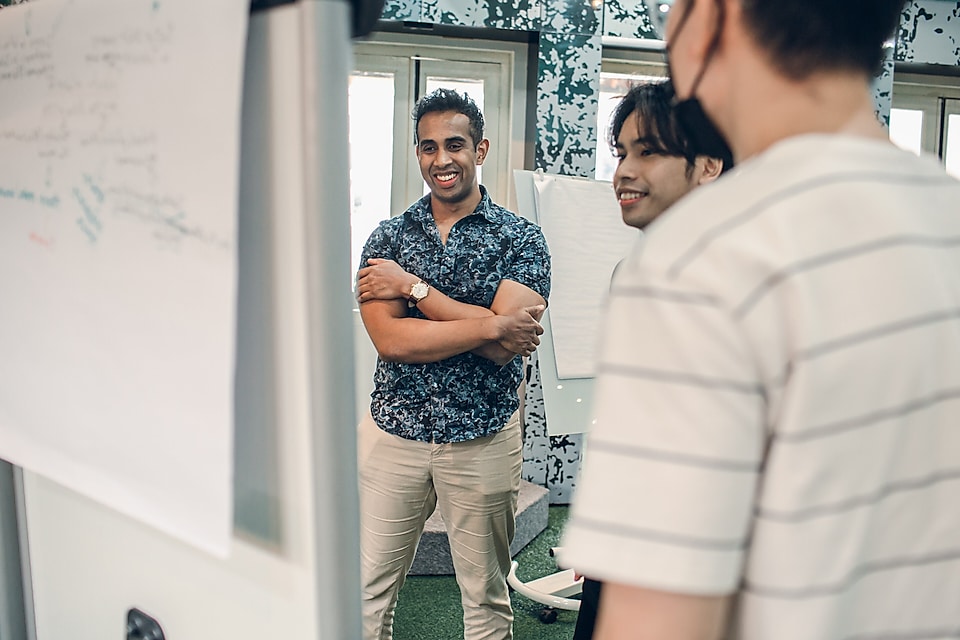
Teams consulting the trainers on their case study practice.
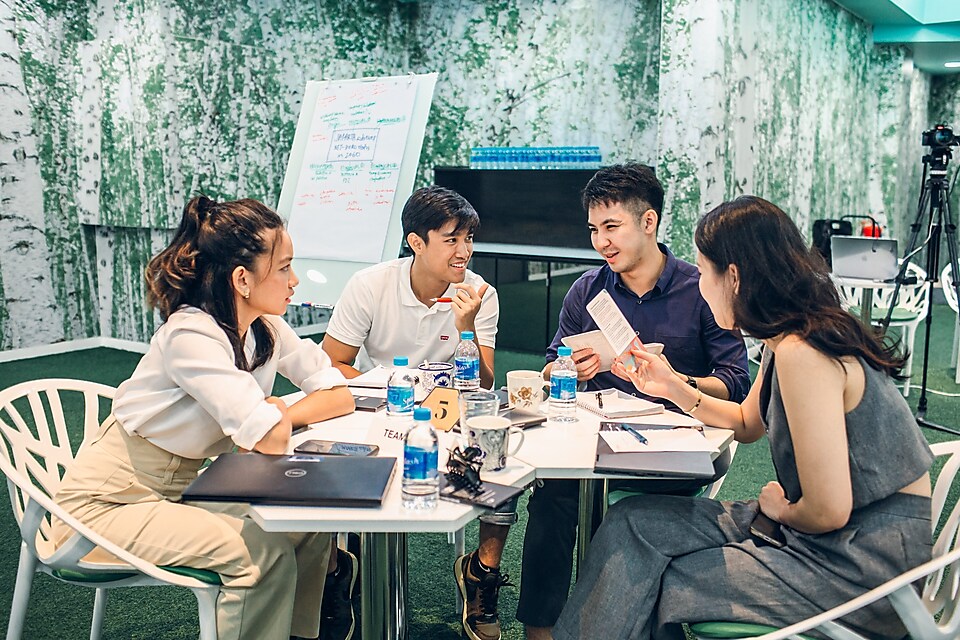
Teams discussing the 2040 Driving Forces – key forces of change that will shape the operating context in the next 20 years, produced by the Centre for Strategic Futures.
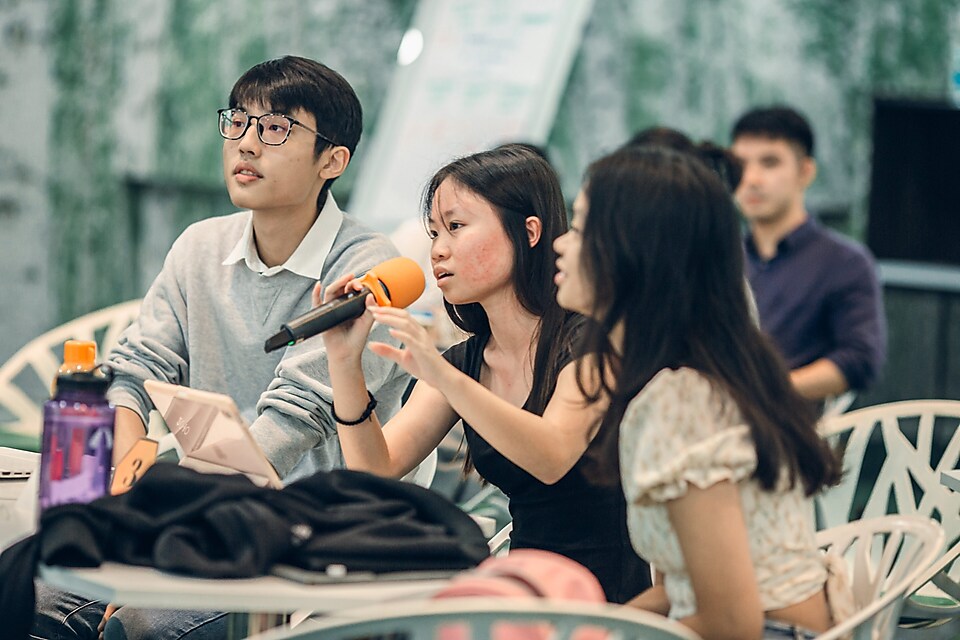
Teams sharing their key takeaways from the session.
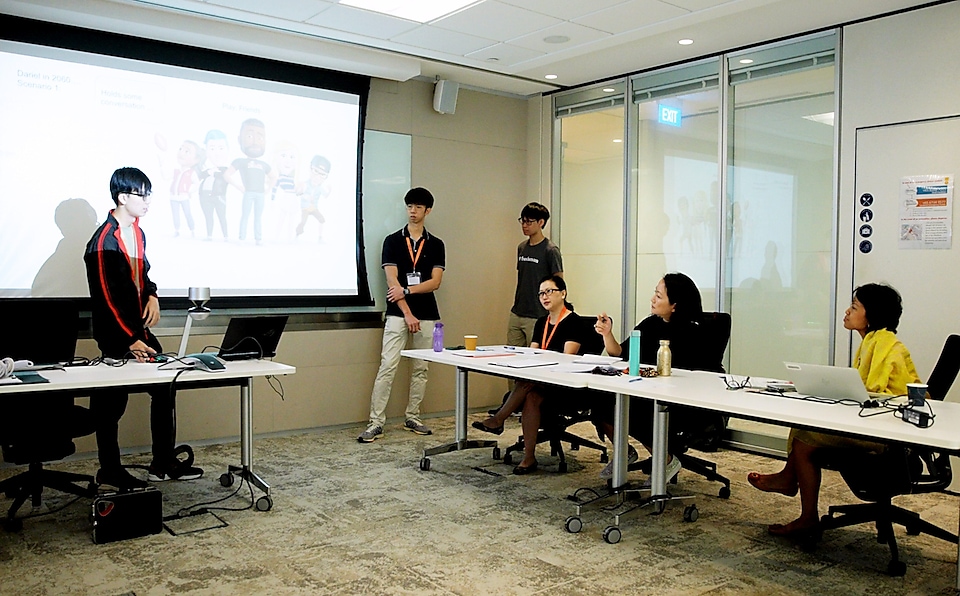
Teams attend a storytelling workshop where they learn how to creatively deliver their scenarios for the Singapore Finals.
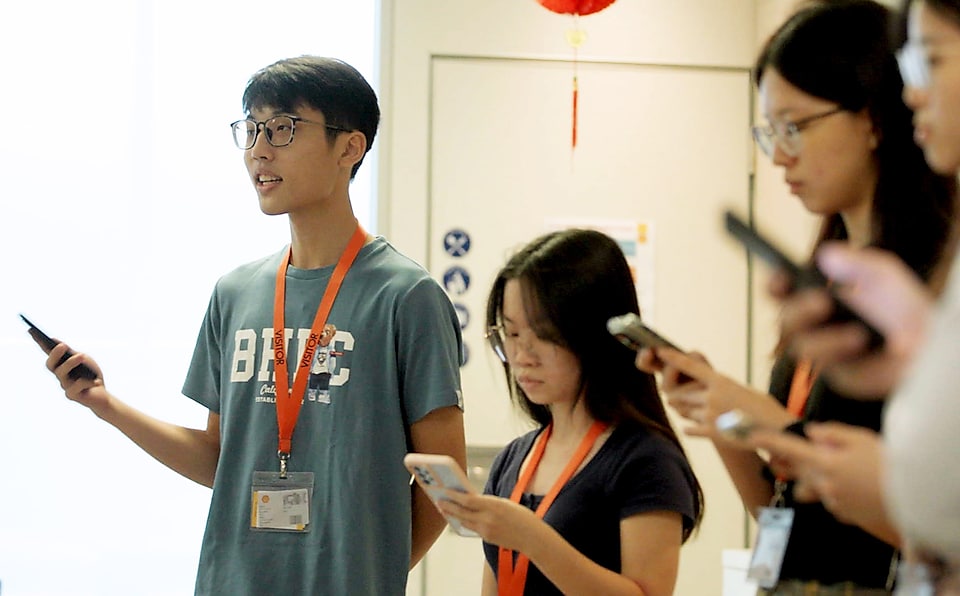
Teams practicing their draft presentations during the workshop.
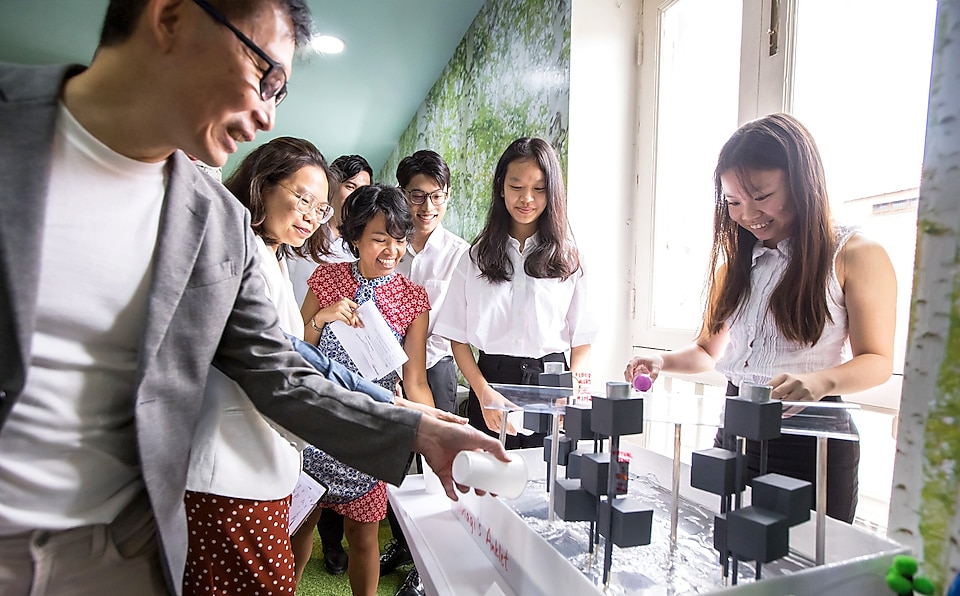
Judges engaging with the team’s display exhibits.
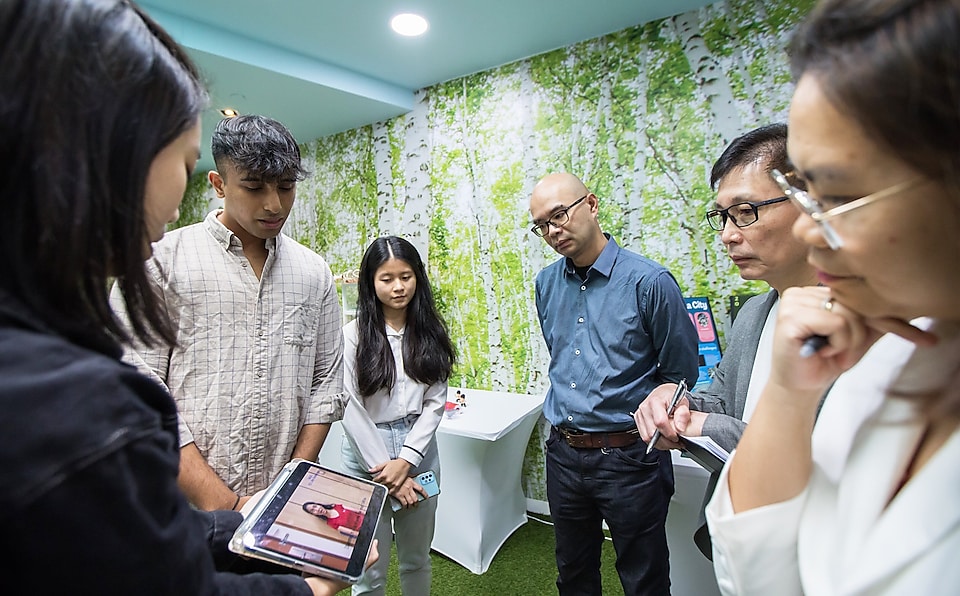
Judges viewing a video put together by the team.
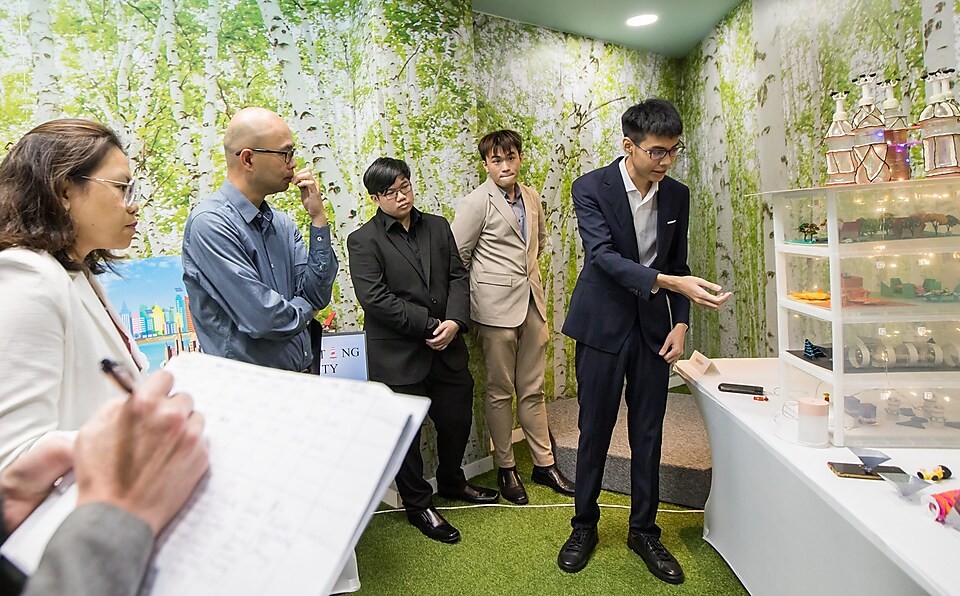
A team describing their display exhibit, modelled after Hong Kong, to the judges.

A team captivating the audience’s attention with an engaging skit.
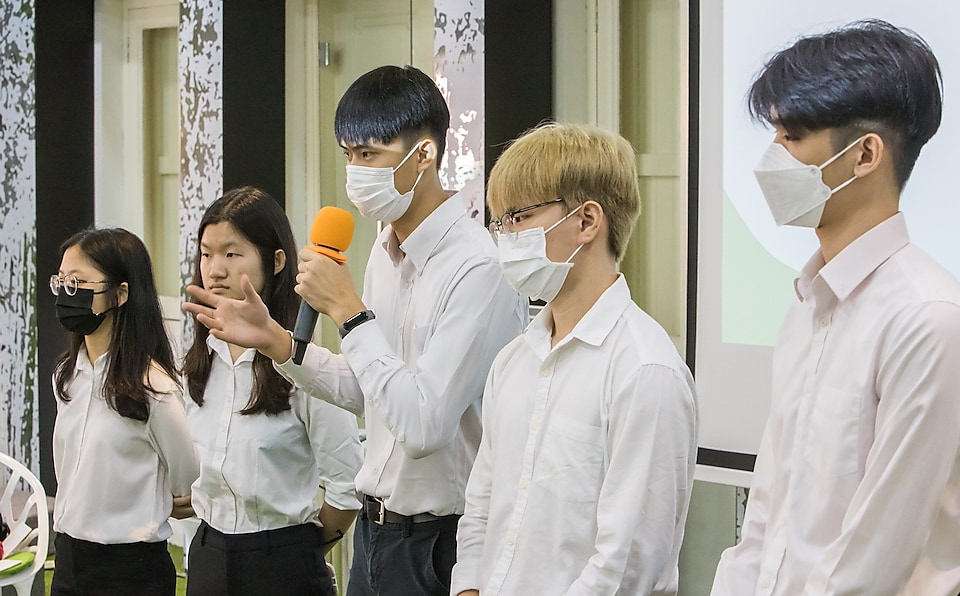
A team taking questions from judges after their presentation.
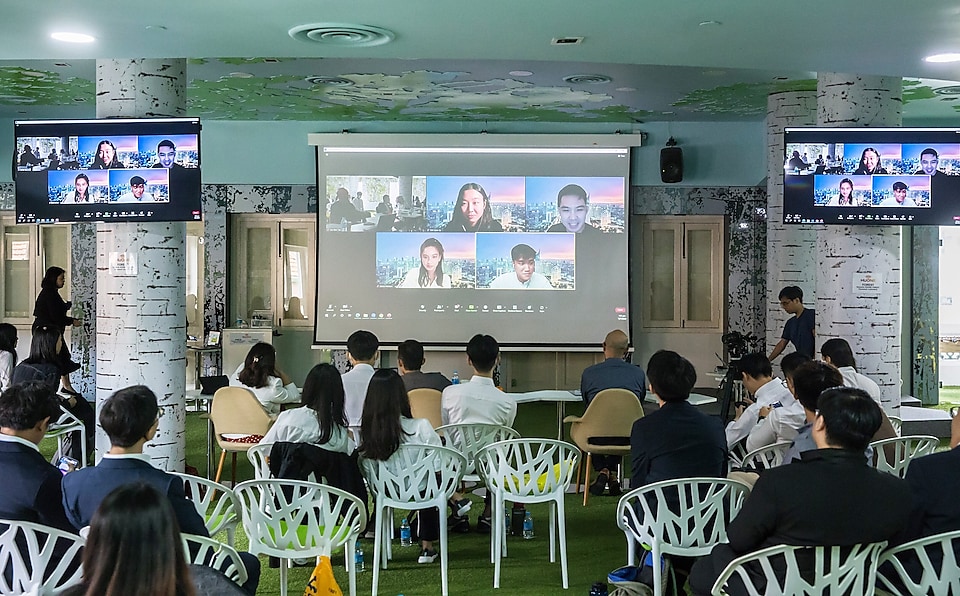
A team dialing in virtually for their presentation.
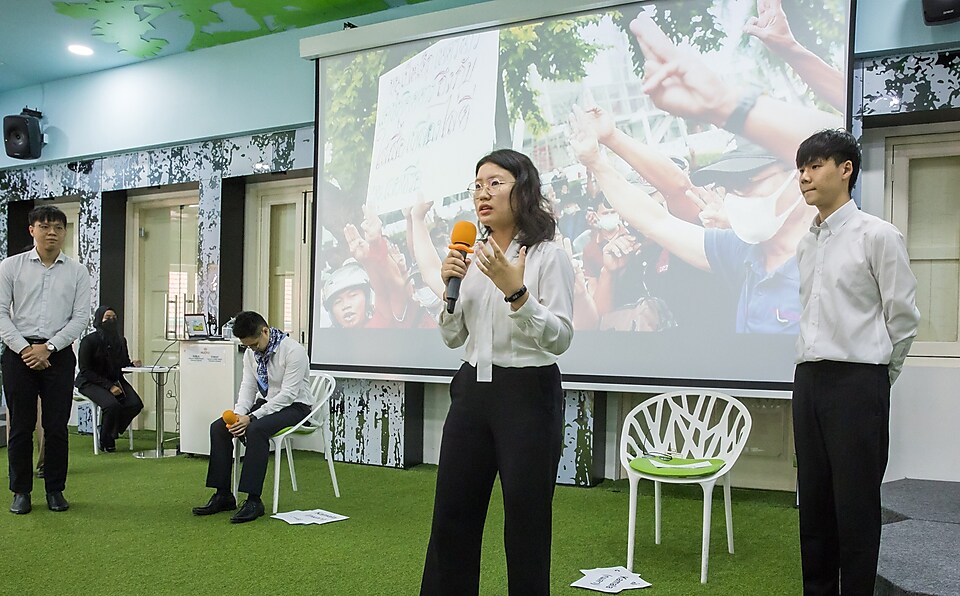
A team acting out their scenarios.
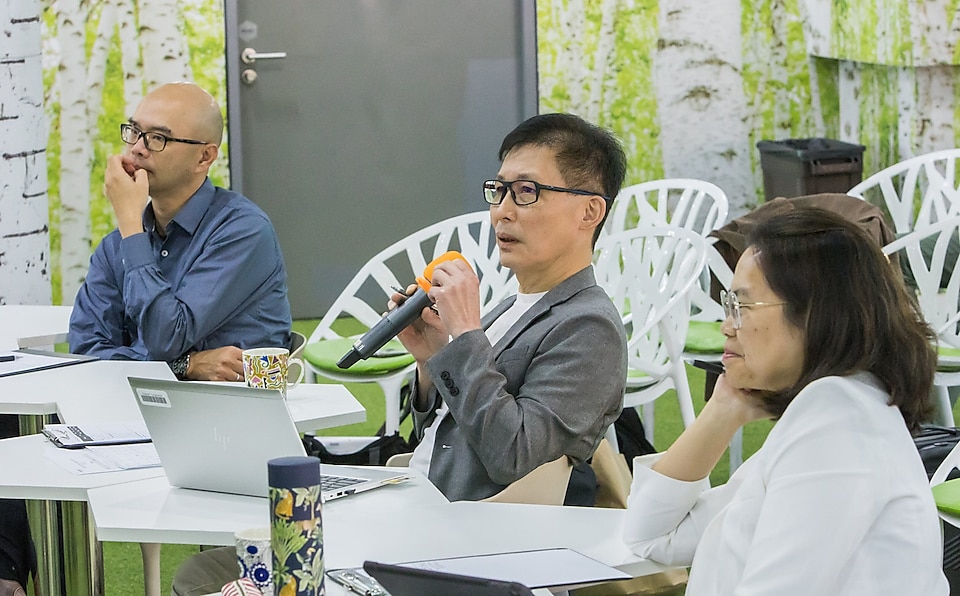
Judges questioning the team to better understand their presentation.
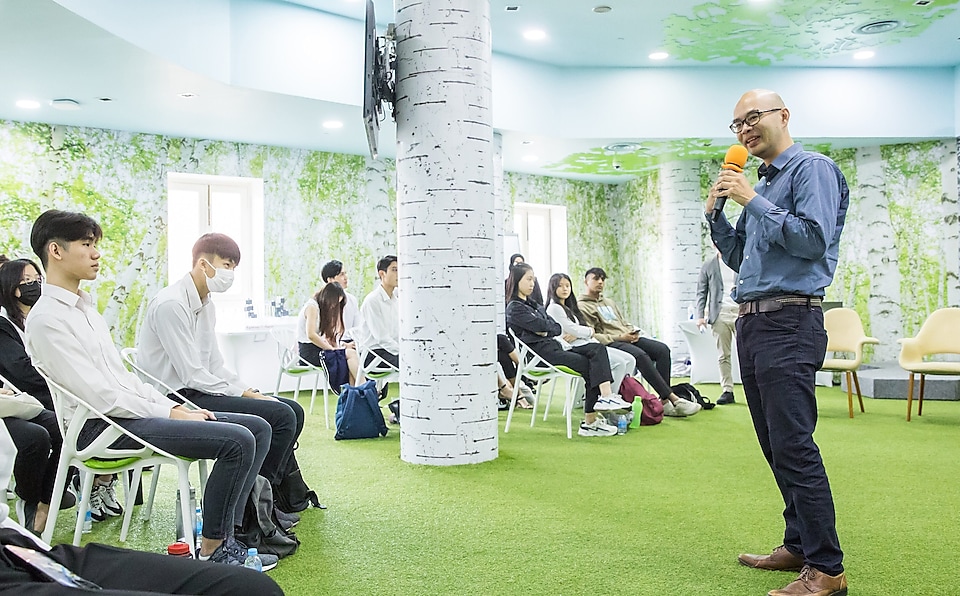
Judges sharing their feedback on the scenarios presented.
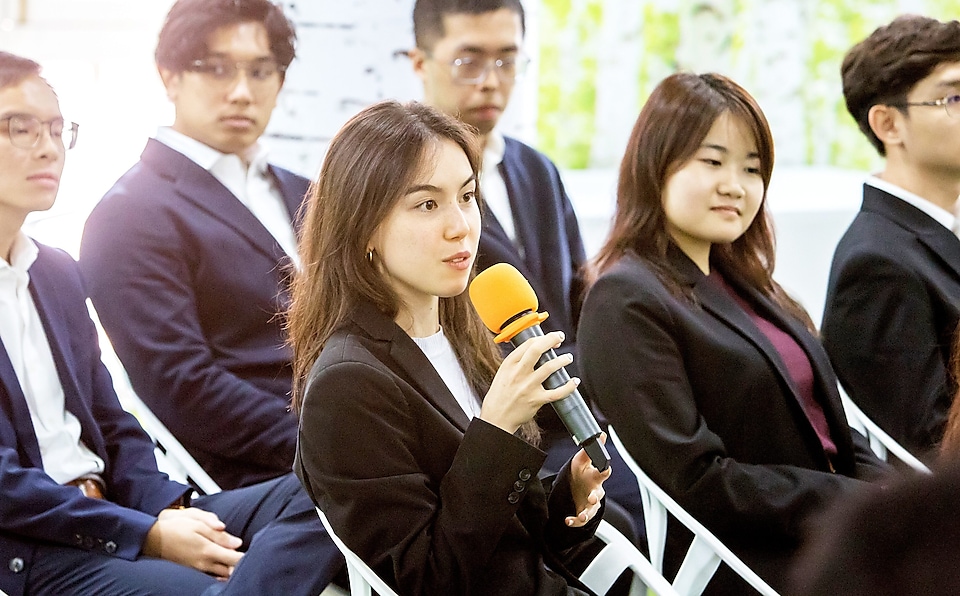
Teams sharing their reflections on their competition journey.
